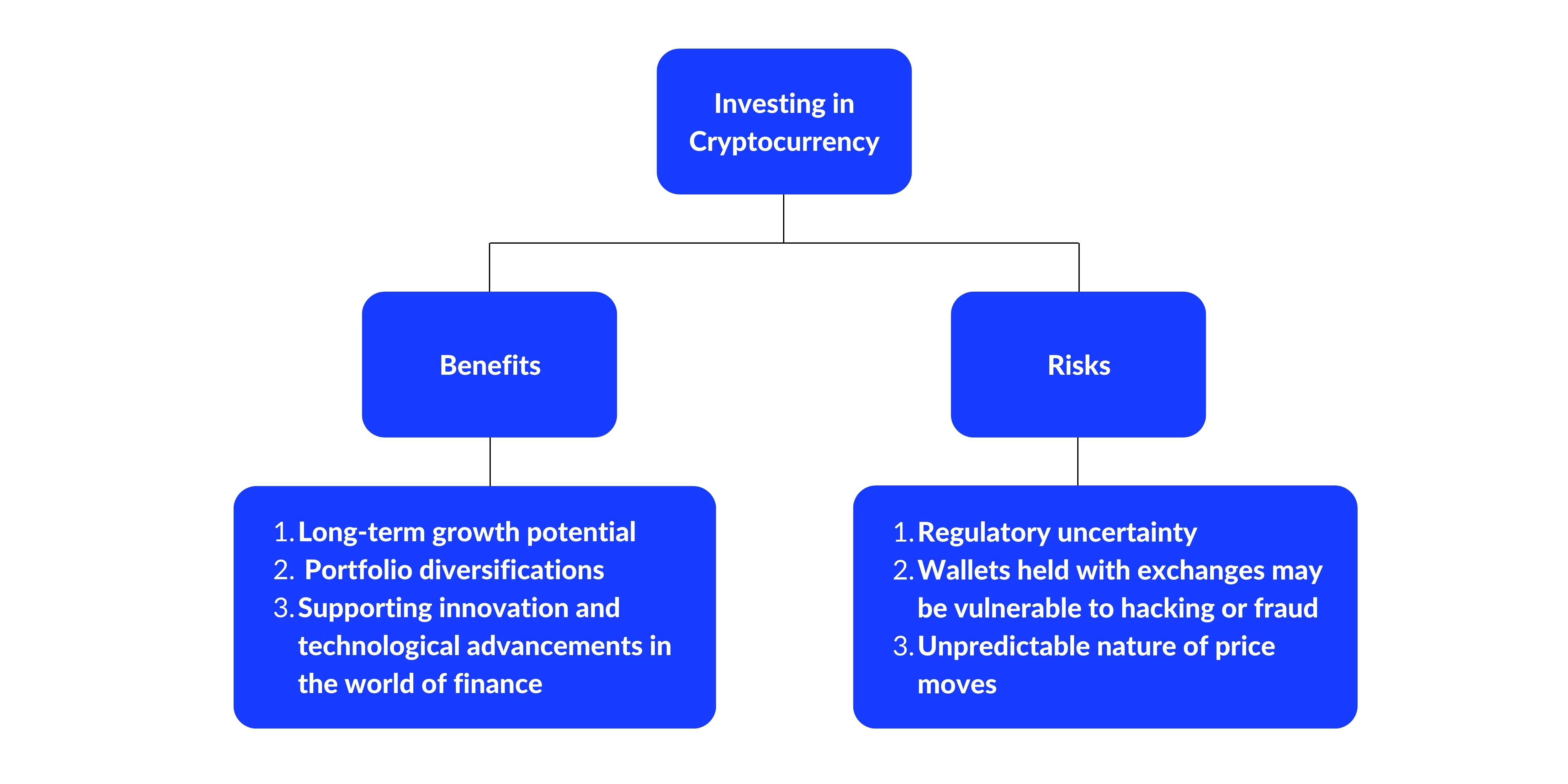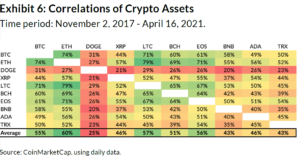Discover Exactly How to Order Cryptocurrencies: Necessary Steps for New Investors
Discover Exactly How to Order Cryptocurrencies: Necessary Steps for New Investors
Blog Article
The Future of Cryptocurrencies: Trends to See in the Upcoming Years
The introduction of Central Financial institution Digital Currencies (CBDCs) stands to redefine the assimilation of digital assets within conventional monetary systems, while enhanced governing examination might shape the operational landscape for cryptocurrencies. In addition, the development of decentralized finance (DeFi) and the growing importance of non-fungible tokens (NFTs) guarantee to alter perceptions of possession and valuation in a digital economic climate.
Surge of Central Financial Institution Digital Currencies
The introduction of Central Financial institution Digital Currencies (CBDCs) stands for a significant change in the monetary landscape as federal governments check out digital choices to conventional fiat money. These state-backed electronic currencies aim to boost the effectiveness of payment systems, promote economic addition, and provide a safe option to personal cryptocurrencies. Unlike decentralized digital money, CBDCs operate under the auspices of reserve banks, ensuring regulatory oversight and security.
Several nations are actively piloting or investigating CBDCs, with notable examples consisting of China's electronic yuan and the European Central Bank's digital euro initiative. These efforts highlight a growing recognition of the prospective advantages of electronic currencies, such as faster deal rates and reduced prices linked with cross-border settlements. CBDCs could offer as a tool to battle illegal tasks by providing higher transparency in purchases.
As the adoption of CBDCs proceeds, they may improve consumer habits and influence international economic characteristics. The transition to an electronic currency structure provides difficulties, consisting of technical infrastructure, cybersecurity worries, and public count on. The increase of CBDCs indicates a turning point that could redefine the function of money in a significantly electronic economic climate, requiring close monitoring by industry stakeholders and policymakers alike.
Increased Regulative Scrutiny

Countries worldwide are taking diverse techniques, from outright restrictions to regulative sandboxes that permit development while making certain compliance. The European Union, for instance, is relocating towards detailed regulations with the marketplaces in copyright-Assets Guideline (MiCA), targeted at developing a unified approach across participant states. In the United States, agencies like the SEC and CFTC are increasingly energetic in issuing guidelines and enforcement actions.
This regulatory setting is most likely to have considerable ramifications for market participants. Firms running in the copyright room might face more stringent compliance needs, which can lead to boosted functional prices. Clear laws can likewise promote better institutional investment, as companies look for to navigate a much more defined lawful landscape. Ultimately, the equilibrium in between technology and policy will certainly shape the future of cryptocurrencies.
Advancement of DeFi Platforms
Decentralized Finance (DeFi) platforms have actually undergone considerable transformation considering that their inception, improving the conventional monetary landscape - order cryptocurrencies. Originally, these systems primarily concentrated on simple features such as borrowing and borrowing, helped Go Here with by wise agreements on blockchain networks. Nevertheless, the advancement of DeFi has actually increased to include a broad array of monetary services, including by-products trading, return farming, and automated market-making.
Among one of the most notable innovations is the development of Layer 2 solutions, which boost scalability and minimize purchase costs, making DeFi a lot more obtainable to a wider audience. Additionally, cross-chain interoperability has actually come to be a critical emphasis, enabling customers to transfer possessions effortlessly throughout various blockchain networks. This advancement fosters higher liquidity and customer engagement.
In addition, the assimilation of advanced administration models has equipped areas to take part in decision-making procedures, advertising sustainability and advancement within the ecosystem. As DeFi remains to mature, we can expect additional enhancements in customer experience through enhanced user interfaces and safety and security measures, resolving problems that have previously impeded mainstream fostering. On the whole, the trajectory of DeFi systems points towards an extra comprehensive and effective economic future, supplying alternatives to conventional banking systems.
Combination of NFTs in Money
In the middle of the quick advancement of the monetary landscape, the integration of Non-Fungible Symbols (NFTs) has emerged as a transformative force. Typically related to electronic art and antiques, NFTs are now locating applications in various economic industries, introducing cutting-edge means to represent possession and worth.
One significant area of combination remains in realty, where NFTs can improve building transactions. By tokenizing property properties, buyers can appreciate fractional possession, reducing entrance barriers and enhancing liquidity. order cryptocurrencies. Furthermore, NFTs can guarantee transparent and unalterable records of ownership, enhancing count on genuine estate transactions
In the world of finance, NFTs are likewise being used for decentralized money (DeFi) applications, enabling collateralization of assets. By making use of NFTs as collateral, consumers can access fundings while maintaining ownership of their electronic properties. This functionality improves the access of economic services and advertises an extra comprehensive financial environment.
In addition, the combination of NFTs into conventional money might change the way intellectual residential property civil liberties are managed, giving designers with brand-new revenue streams through smart contracts. On the whole, the assimilation of NFTs in financing signifies a shift in the direction of even more cutting-edge, effective, and transparent economic options, leading the way for future developments.
Innovations in Blockchain Modern Technology

One significant fad is the appearance of Layer 2 remedies, made to improve scalability and purchase speeds, therefore dealing with the limitations of primary blockchain networks. These services enable faster processing of deals, decreasing fees and increasing efficiency, which is essential for mass fostering.
Moreover, interoperability between various blockchain networks is gaining grip. This growth enables seamless information exchange and asset click transfers across diverse systems, advertising a much more linked and effective community. Methods that assist in cross-chain interaction are vital for promoting collaboration amongst decentralized applications (copyright) and boosting user experiences.
Furthermore, innovations in agreement systems, such as proof-of-stake and delegated proof-of-stake, are adding to more energy-efficient and protected blockchain procedures. These developments not only attend to ecological worries but likewise enhance network durability.
As blockchain innovation remains to mature, its combination into numerous sectors, including money, supply chain, and medical care, will certainly redefine conventional systems, leading the way for a decentralized future.
Conclusion
To conclude, the future of cryptocurrencies is identified by transformative patterns that will certainly shape the monetary landscape. The introduction of Central Bank Digital Currencies will boost the assimilation of electronic assets into conventional monetary systems. Simultaneously, regulatory structures will progress, promoting institutional investment while making sure customer security. Furthermore, the constant improvement of decentralized finance systems and blockchain modern technology, together with the integration of non-fungible tokens, will certainly redefine possession and economic deals, promoting raised adoption and advancement within the market.
Report this page